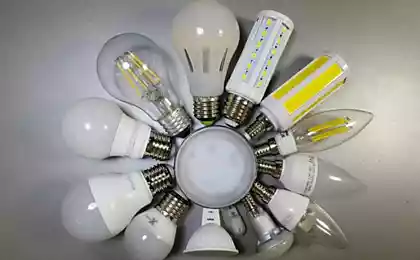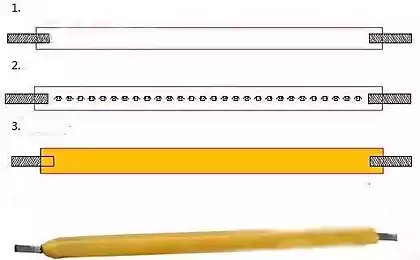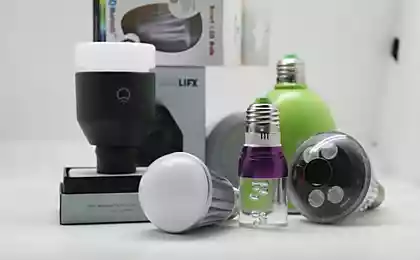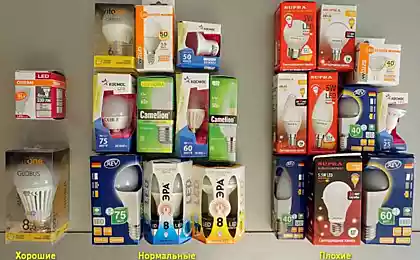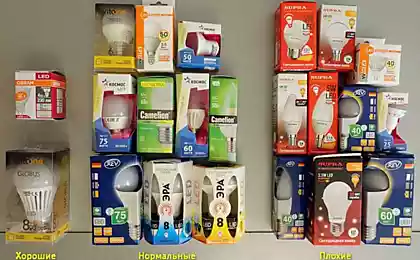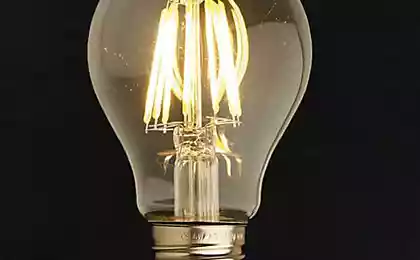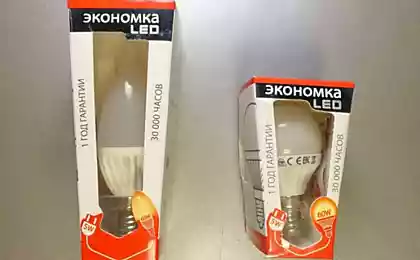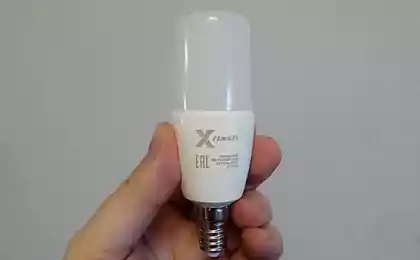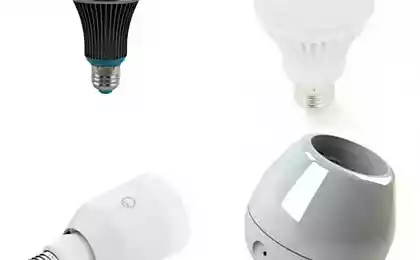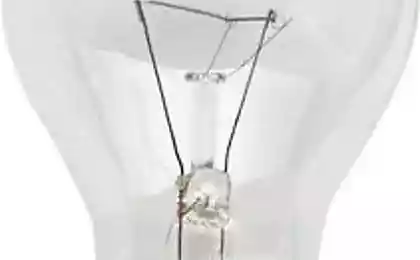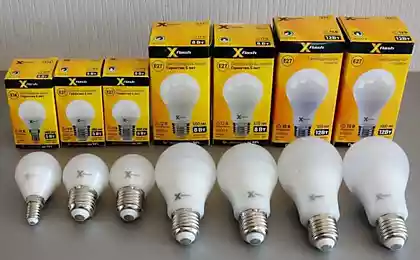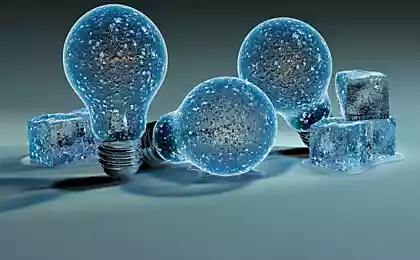1601
Thomson Filament - LED lamps of new generation
LED lighting gradually comes into our lives. A few years ago it was hard to imagine that the streets, government agencies, transportation will be illuminated by LEDs. Now this is an accomplished fact. With high probability soon the whole world is almost completely switch to LED lighting.
The first household LED lamps under standard socket E27 and E14 have many disadvantages: uncomfortable color of light, low индекс color rendering (CRI) , leading to the misperception of colors surrounding objects, pulsation (flashing light), the inability to work with switches, the indicators and controls the brightness (dimmer), the direction of light (in the majority of the first generation of LED lamps are placed on a flat board before which placed the ceiling, so the lamp does not light back) is not very high efficiency (50-70 lm / W).
Just over a year ago, the first lamp on the new generation of LED strands (filament). The first time I saw them in November 2013 on the exhibition Interlight . Then they showed only unknown Chinese producers. Now LED lamp filaments appeared in the range of large brands. Thomson company offered me to test two types of lamps - 4-watt "candle" with E14 base and 6-watt bulb with E27 base.
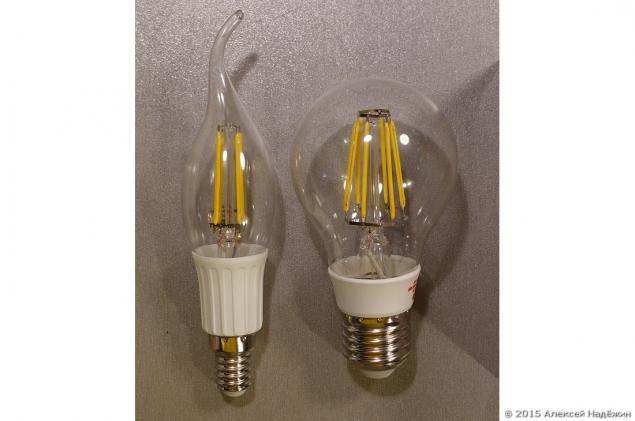
The first lamp replaces the conventional 40-watt bulb, the second - 60-watt.
LED strands represent a sapphire or glass substrate on which a plurality of LEDs, a common phosphor coated (COB). The capacity of each thread - 1 W.
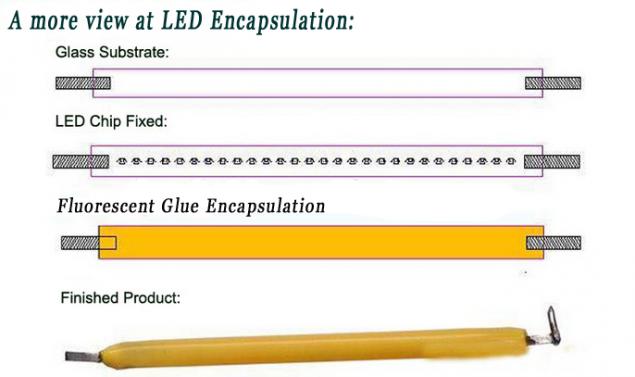
In a 6-watt bulb uses six strands, 4-watt - four.

In the lamp cap is a miniature electronic circuit board with driver (voltage converter is made from alternating voltage DC voltage without pulsation to power the LED).
LED lights on the filaments are almost complete resemblance to classic incandescent lamps both in appearance and on the radiation pattern. Filamentous emitters are very similar to an incandescent lamp filament.

In LED lamps on the threads no radiators, they are very light - 6-watt bulb weighs 35 grams, 4-Watt - 20 grams.
The efficiency of LED lamps filaments is higher than that of conventional LED lamps (more than 105 lm / W), and the heating body is noticeably lower.
Most likely the future of home lighting lamps for it on LED strands.
For both lamps claimed life of 25,000 hours, the operating voltage of 220-240 V. Adjust the brightness (dimming) is not supported.
Lamp Thomson TL-60W Classic manufacturer declares power 6 W, luminous flux of 560 Lm, the color temperature of 3000K (mistakenly listed on the packaging of the color temperature of 2700K).
Lamp Thomson TL-40W Classic - power 4 W, luminous flux of 350 Lm, the color temperature of 3000K.
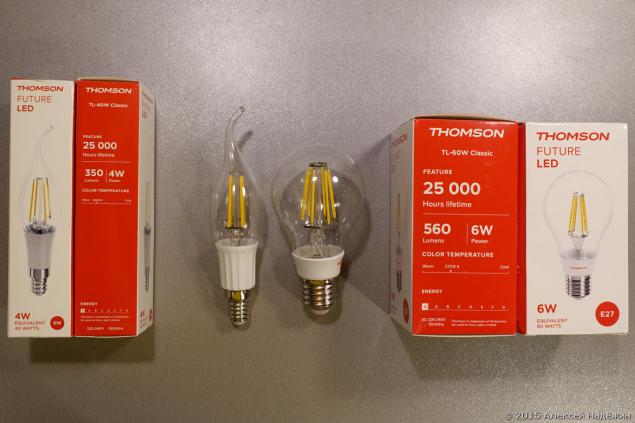
Lamps normally work with switches that have indicator.
Ripple both light bulbs minimized - less than 2% (ripple incandescent lamp 20%). The measurements were made instrument Lupin .
Measurements on Viso LightSpion showed that the light output of both lamps, even the above statement.

Brightness 6-watt bulb Thomson corresponds to 65-watt incandescent bulb, 4-watt - 45 watt (60-watt incandescent bulb gives a clear 550 lumens, 40-watt candle transparent - 340 lumens).
The measurement result Viso LightSpion 6-watt bulb.
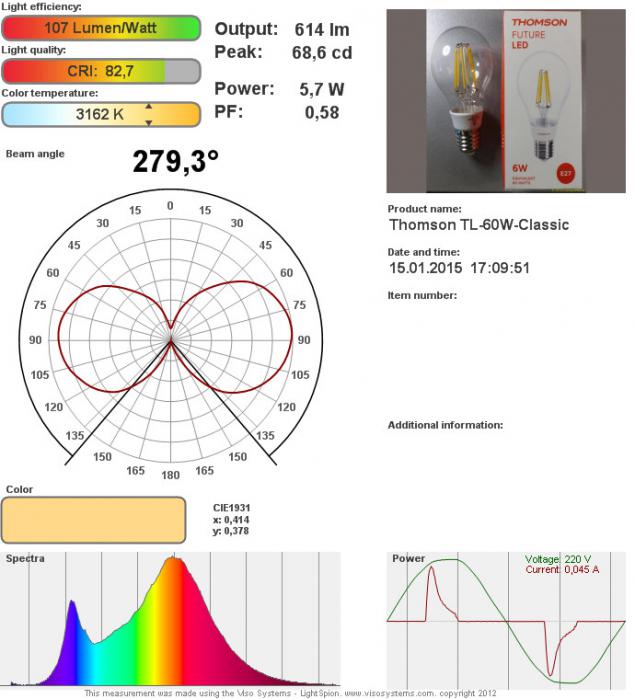
The measurement result for 4-watt bulb.
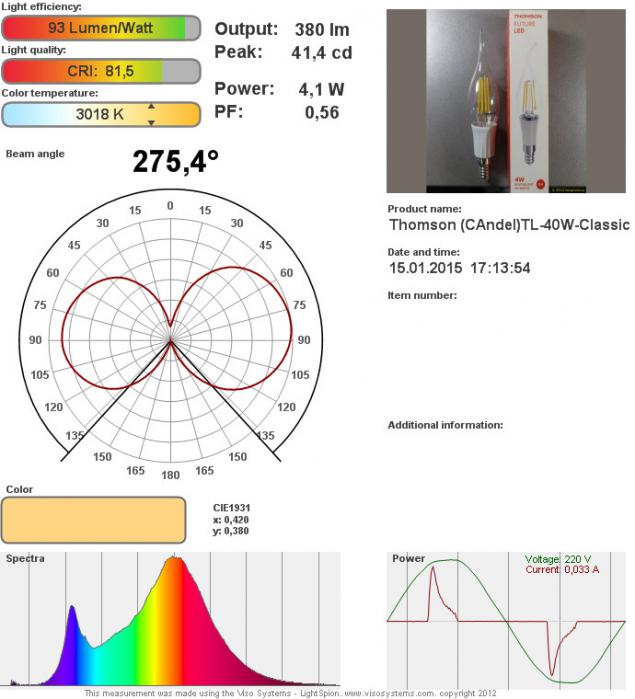
Comparison of 6-watt light bulb with an incandescent lamp 60 watts. These photos were taken in manual mode with the same exposure settings and manually setting the white balance to 3500K.

Comparison of 4-watt light bulb with an incandescent lamp 40 watts.
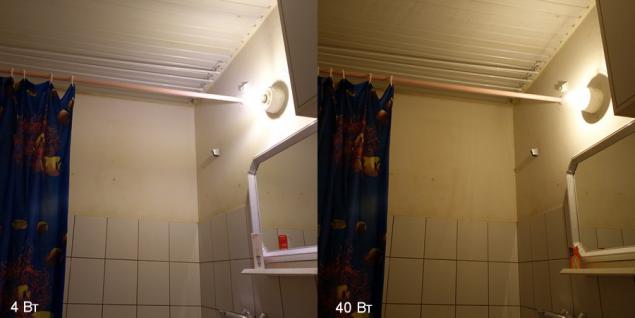
Both lamps have a pleasant and comfortable light, very similar to light bulbs. He whiter, but even more comfortable.
6-watt bulb sold for 890 rubles , 4-watt for 690 rubles .
It is hoped that the LED lamp filaments will be cheaper and will conquer the world. Already in the Chinese online stores you can find a 6-watt lamp LED strands as low as $ 05.07, but the buyer of these lamps can expect the following pitfalls: the discrepancy declared power and luminous flux real ripple (flickering) light due to the primitive driver (Advanced driver so small size make easy), uncomfortable lighting color due to the poor quality of the phosphor, the fragility of the LEDs due to overheating.
© 2015 Alex Nadёzhin
Source: geektimes.ru/company/medgadgets/blog/247172/
The first household LED lamps under standard socket E27 and E14 have many disadvantages: uncomfortable color of light, low индекс color rendering (CRI) , leading to the misperception of colors surrounding objects, pulsation (flashing light), the inability to work with switches, the indicators and controls the brightness (dimmer), the direction of light (in the majority of the first generation of LED lamps are placed on a flat board before which placed the ceiling, so the lamp does not light back) is not very high efficiency (50-70 lm / W).
Just over a year ago, the first lamp on the new generation of LED strands (filament). The first time I saw them in November 2013 on the exhibition Interlight . Then they showed only unknown Chinese producers. Now LED lamp filaments appeared in the range of large brands. Thomson company offered me to test two types of lamps - 4-watt "candle" with E14 base and 6-watt bulb with E27 base.

The first lamp replaces the conventional 40-watt bulb, the second - 60-watt.
LED strands represent a sapphire or glass substrate on which a plurality of LEDs, a common phosphor coated (COB). The capacity of each thread - 1 W.

In a 6-watt bulb uses six strands, 4-watt - four.

In the lamp cap is a miniature electronic circuit board with driver (voltage converter is made from alternating voltage DC voltage without pulsation to power the LED).
LED lights on the filaments are almost complete resemblance to classic incandescent lamps both in appearance and on the radiation pattern. Filamentous emitters are very similar to an incandescent lamp filament.

In LED lamps on the threads no radiators, they are very light - 6-watt bulb weighs 35 grams, 4-Watt - 20 grams.
The efficiency of LED lamps filaments is higher than that of conventional LED lamps (more than 105 lm / W), and the heating body is noticeably lower.
Most likely the future of home lighting lamps for it on LED strands.
For both lamps claimed life of 25,000 hours, the operating voltage of 220-240 V. Adjust the brightness (dimming) is not supported.
Lamp Thomson TL-60W Classic manufacturer declares power 6 W, luminous flux of 560 Lm, the color temperature of 3000K (mistakenly listed on the packaging of the color temperature of 2700K).
Lamp Thomson TL-40W Classic - power 4 W, luminous flux of 350 Lm, the color temperature of 3000K.

Lamps normally work with switches that have indicator.
Ripple both light bulbs minimized - less than 2% (ripple incandescent lamp 20%). The measurements were made instrument Lupin .
Measurements on Viso LightSpion showed that the light output of both lamps, even the above statement.

Brightness 6-watt bulb Thomson corresponds to 65-watt incandescent bulb, 4-watt - 45 watt (60-watt incandescent bulb gives a clear 550 lumens, 40-watt candle transparent - 340 lumens).
The measurement result Viso LightSpion 6-watt bulb.

The measurement result for 4-watt bulb.

Comparison of 6-watt light bulb with an incandescent lamp 60 watts. These photos were taken in manual mode with the same exposure settings and manually setting the white balance to 3500K.

Comparison of 4-watt light bulb with an incandescent lamp 40 watts.

Both lamps have a pleasant and comfortable light, very similar to light bulbs. He whiter, but even more comfortable.
6-watt bulb sold for 890 rubles , 4-watt for 690 rubles .
It is hoped that the LED lamp filaments will be cheaper and will conquer the world. Already in the Chinese online stores you can find a 6-watt lamp LED strands as low as $ 05.07, but the buyer of these lamps can expect the following pitfalls: the discrepancy declared power and luminous flux real ripple (flickering) light due to the primitive driver (Advanced driver so small size make easy), uncomfortable lighting color due to the poor quality of the phosphor, the fragility of the LEDs due to overheating.
© 2015 Alex Nadёzhin
Source: geektimes.ru/company/medgadgets/blog/247172/
Collecting chemical elements - what it looks like? (UPD. Collector of articles you can ask questions)
Near future: 4 scenarios use neyrointreyfesov
